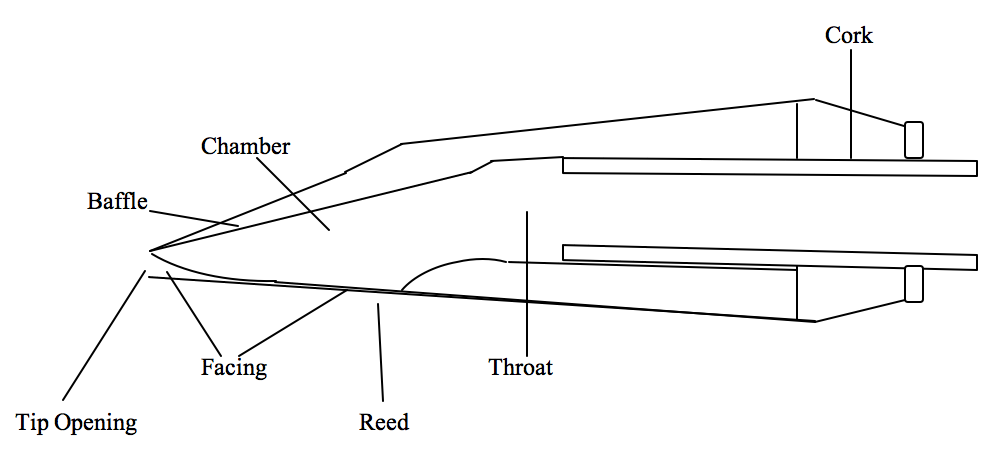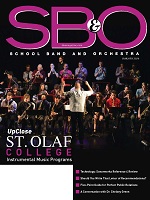 In part one, you learned to assess your student’s natural color and shape of sound. In part two, we align their abilities to a mouthpiece/head joint that matches their instrument.
In part one, you learned to assess your student’s natural color and shape of sound. In part two, we align their abilities to a mouthpiece/head joint that matches their instrument.
Equipment Trials
Important: have a selection of mouthpieces, head joints, and instruments to try. Most stores will not stock head joints except specialty flute shops like Carolyn Nussbaum. Try products representing a tonal range of colors to cover the basics.
The assessment begins with mouthpiece trials and then combines choices with instruments. For flute, work with your local music store to go straight to trialing instruments since we recommend models standard with upgraded head joints. Order several of each model when possible. At this stage, you are clarifying what students need to refine for future selection.
Clarinet & Saxophone Mouthpiece Trial Goal
The goal is students playing expressively, easily, more fluidly from the right mouthpiece. If students can’t produce an even timbre or play evenly and sound different across the registers of the instrument, it’s the wrong mouthpiece. They may have increased pitch problems or unable to go from piano to forte easily.
Clarinet & Saxophone Mouthpiece Trial Recommendations
- Vandoren Mouthpieces
- Vandoren produces consistent mouthpieces (for classical, not jazz).
I suggest trialing:
Brighter Mouthpieces
- Model M13 or M15 Profile 88 13 Series
- Alto Model A3/Tenor Model T3 Optimum Series
These models have closer facings that produce an overall brighter sound. They work for performers with darker overall shapes of sound or who struggle to focus their sound.
Neither Bright nor Dark Mouthpieces
- Model M30 Profile 88 13 Series
- Alto Model A3/Tenor Model T3 Optimum Series
These models have a medium tip open, for those neither bright nor dark, who can focus their sound naturally. To sound brighter or darker, try others to produce that color or shape.
Darker Mouthpieces
- Model BD5 13 Series
- Alto A35/ Tenor T35 V5 Series
These choices are the most open, benefitting those with a very bright sound or need to round out their sound, deepen it substantially, and may work best with those with lots of wind capacity.
Vandoren traditional reed strengths from 2.5-3.5 will fit any of these. Have fresh reeds available. Old mouthpiece reeds will conform to the shape of the table. Try these with an inverted metal ligature. Fabric slows vibration of the reed down giving a false impression of the actual tonal output.
Instrument Trial Recommendations
When finished, start instrument trials with the mouthpiece. With flutes, keep the head joint with the model to which it belongs, but ideally get several of each model to test.
Clarinet
- GetSeriO ClarO Model: brighter overall shape of sound (color ring selection red, orange, pink color-rings)
- Buffet-Crampon Model R13: Neither bright nor dark (color-ring selection red, orange, brown)
- GetSeriO OscurO Model: darker overall shape of sound (color-ring selection red, brown, green) or a Selmer Recital (color ring selection red, brown, green)
Saxophone
- Yamaha 62 for alto or 64 for tenor: brighter overall shape of sound (color- ring selection red, orange)
- Selmer Series III for alto or tenor: neither bright nor dark (color-ring selection red, orange, brown)
- Keilwerth SX90R for alto or tenor: darker sounding overall in color and shape of sound (color-ring selection red, brown, green)
Flute
- Azumi, Model AZ-3: brighter in overall shape of sound (color-ring selection red, orange)
- Haynes Model Amadeus AF780: neither bright nor dark (color-ring selection red, orange, brown)
- Trevor James, Virtuoso Model VV-HROE: darker sounding overall (color-ring selection red, brown, green)
When a student has a fundamentally bright tonal shape of sound (color-ring red) The brighter the sound, the more need to experiment with darker mouthpieces/head joints and darker sounding instruments. Control the experiment to isolate the mouthpiece/head joint from the instrument itself.
When a student has a fundamentally dark tonal shape of sound (color-ring brown) For players with more darkness, experiment with brighter mouthpieces/head joints and brighter instruments. Typically, students with darker sounds need to maintain their deep color of sound because it is their strength and present in either their mouthpiece/head joint or instrument. The darker they sound the more high’s they will need to create a colorful mature shape of sound.
When a student has neither a bright nor dark tonal shape of sound (color-rings red & brown) Often the problem is in reverse. Typically, these students make up most of your section and are playing on too dark of a mouthpiece/head joint and/or instrument that is too bright. They need more color balanced choices.
When a student has a lot of sweetness or resonance in their natural sound (color-rings pink and orange), try instruments with this color and shape of sound that is typically color-balanced.
When a student has a very even sound (color-ring green) experiment with brighter mouthpieces and instruments first and then move to neither bright nor dark.
When a student uses a lot of air or overblows (color-ring purple) they typically need more lows or darkness in the sound; choose neutral or the darker choice.
Summary
 You will see from this entire process a range of tonal color and shapes of sound represented. We presented videos at the International Clarinet Association Virtual 2021 conference by Jerry Weimer and Don Nathan. View at bit.ly/ColorRingSuccess. These concepts apply across any instrument.
You will see from this entire process a range of tonal color and shapes of sound represented. We presented videos at the International Clarinet Association Virtual 2021 conference by Jerry Weimer and Don Nathan. View at bit.ly/ColorRingSuccess. These concepts apply across any instrument.






























